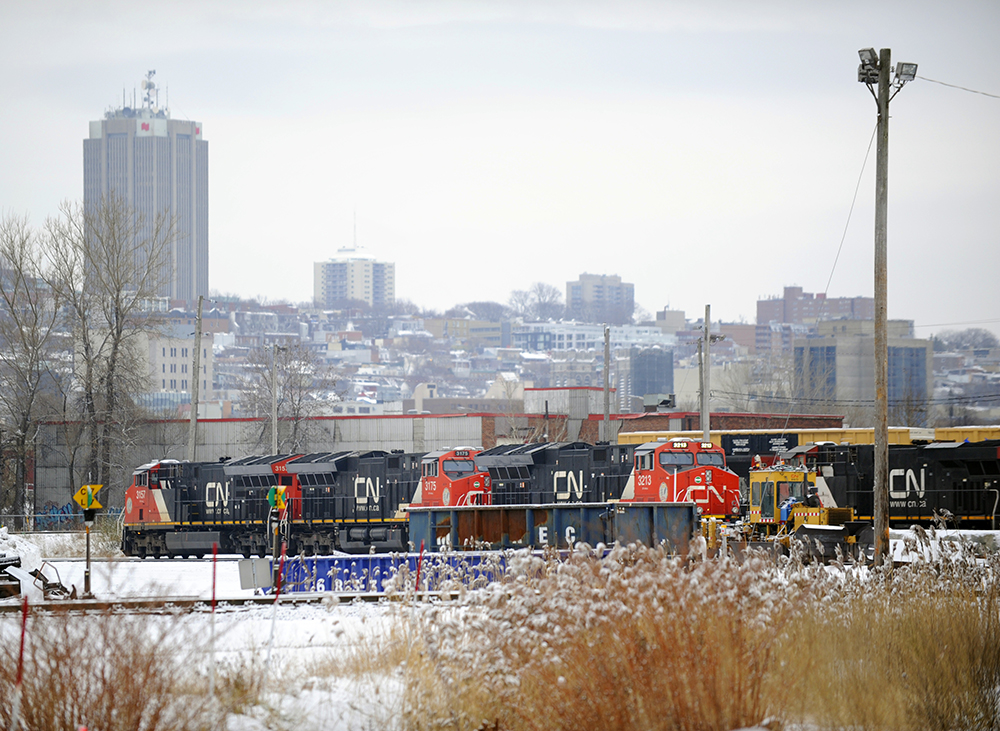

Global HR News
Global HR News
New U.S. rule to thwart railroad efforts to cut train crews to one person
July 27, 2022
By
The Associated Press
 (Pascal Huot/Adobe Stock)
(Pascal Huot/Adobe Stock) Major railroads will be required to maintain two-person crews under a new rule announced Wednesday that will thwart industry efforts to cut crews down to one person.
The Federal Railroad Administration said in a rule published in the Federal Register that railroads will be required to continue using two-person crews in most circumstances as they haul all kinds of cargo, including hazardous materials, across the country. But there will be an exception to allow short-line railroads that have already been using one-man crews to continue using them and railroads can apply for permission to use smaller crews if they can prove it is safe.
Railroads have sought the discretion to operate trains with only one person and move conductors to ground-based jobs in places where automatic braking systems have been installed. It has been a key issue in deadlocked contract talks between freight railroads and their 12 unions, currently being reviewed by a special board of arbitrators appointed this month by President Joe Biden.
Safety, job security key issues
Labour groups have opposed one-person crews for years due both to what they say are concerns about safety and jobs. Labor agreements requiring two-person crews have been in place for roughly 30 years at major railroads, although many short-line railroads operate with one-man crews.
“This proposed rule acknowledges that crew size is fundamentally a safety issue at its core,” said Greg Regan, president of the AFL-CIO’s Transportation Trades Department coalition that represents rail unions.
Arbitrators reviewing contract talks that began more than two years ago are listening to proposals from both sides this week. Federal law prohibits rail unions from striking until mid September while that board develops a set of recommendations. Both sides can negotiate a deal based on those recommendations.
Federal officials said the proposed rule will replace the existing patchwork of state laws on railroad crew sizes with a national standard.
“This proposed rule will improve safety for America’s rail passengers — and rail workers — across the country,” Transportation Secretary Pete Buttigieg said.
A similar rule requiring two crew members was issued in 2016, but that was abandoned during the Trump administration because the Railroad Administration said there wasn’t enough evidence to show it was safer.
Regulators said Wednesday that a second crew member in the cab of locomotives play a key role in monitoring train operations and making sure safety rules are being followed.
Freight railroads had argued that the installation of a system that can stop trains automatically in certain circumstances, called Positive Train Control, made a second person unnecessary.
Politics over data-driven policy: Trade group
The head of the Association of American Railroads trade group, Ian Jefferies, said the rule “prioritizes politics over sound, data-driven policy.”
Because of new braking technology, Jefferies said, “there is no plausible safety justification for regulating the number of individuals physically located inside the cab of a locomotive.”
The railroad industry has emphasized that crash data doesn’t show that two-man crews are safer. But labour groups argued that the data can’t show how safe one-person crews are because most railroads use two-person crews now.
A Union Pacific spokeswoman said crew size should be determined through negotiation with the unions _ not by regulators. UP officials have argued that moving conductors out of locomotives into a ground-based position would make those jobs more attractive because conductors would be able to work more predictable schedules if they didn’t have to be on trains.
Railroads have struggled to hire new workers this year amid ongoing worker shortages as the nation exits the worst of the pandemic.
Print this page